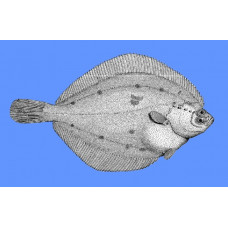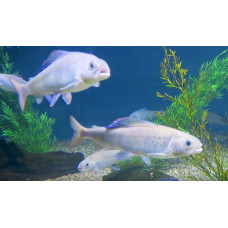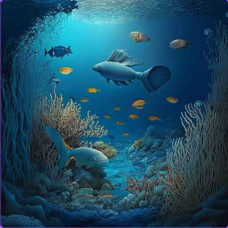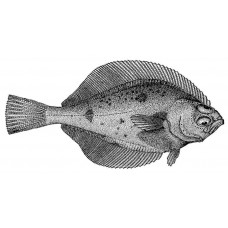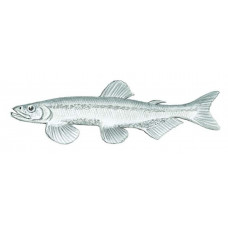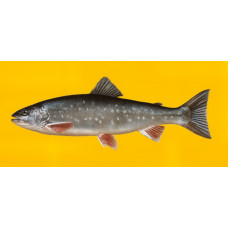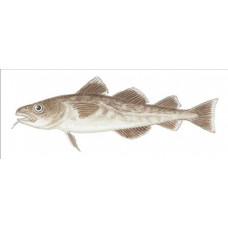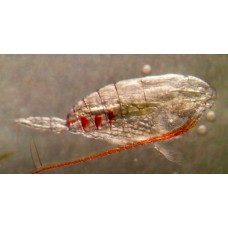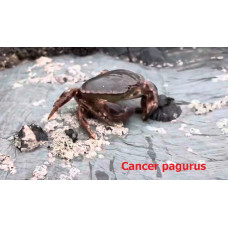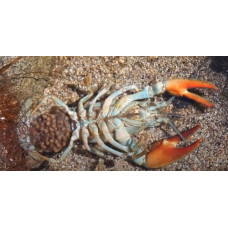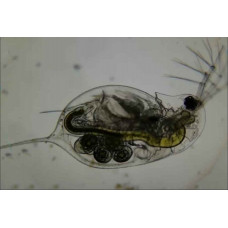Fauna of the Chukchi Sea
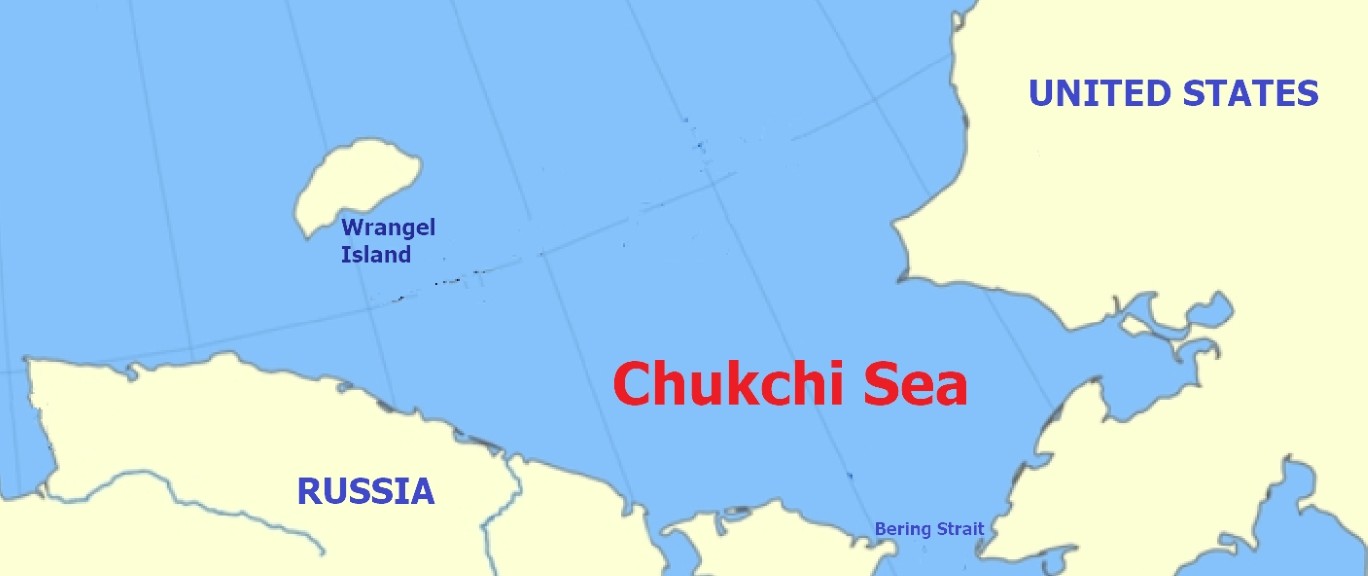 The Chukchi Sea is a marginal sea of the Arctic Ocean located between Chukotka and Alaska. The Long Strait connects it to the East Siberian Sea to the west, and it connects to the Beaufort Sea near Point Barrow to the east. The Bering Strait connects it to the Bering Sea of the Pacific Ocean to the south. The international date line passes through the sea. It covers 595 thousand km². Fifty-six percent of the seafloor is less than 50 meters deep, and the maximum depth is 1,256 meters. Water temperatures range from 4 to 12 °C in the summer and from -1.6 to -1.8 °C in the winter. The coastline is poorly indented. From October to June, the sea is covered with ice. The warm Alaskan Current clears the southern part of the sea of ice for two to three months during the warm season. A cold current from the East Siberian Sea brings ice to the Chukotka coast. Winter is characterized by increased salinity (31-33 ‰) of the subglacial water layer. In summer, salinity is lower, increasing from west to east from 28 to 32 ‰. The salinity is lowest at the edges of melting ice and at river mouths (3-5 ‰). Salinity usually increases with depth.
The Chukchi Sea is a marginal sea of the Arctic Ocean located between Chukotka and Alaska. The Long Strait connects it to the East Siberian Sea to the west, and it connects to the Beaufort Sea near Point Barrow to the east. The Bering Strait connects it to the Bering Sea of the Pacific Ocean to the south. The international date line passes through the sea. It covers 595 thousand km². Fifty-six percent of the seafloor is less than 50 meters deep, and the maximum depth is 1,256 meters. Water temperatures range from 4 to 12 °C in the summer and from -1.6 to -1.8 °C in the winter. The coastline is poorly indented. From October to June, the sea is covered with ice. The warm Alaskan Current clears the southern part of the sea of ice for two to three months during the warm season. A cold current from the East Siberian Sea brings ice to the Chukotka coast. Winter is characterized by increased salinity (31-33 ‰) of the subglacial water layer. In summer, salinity is lower, increasing from west to east from 28 to 32 ‰. The salinity is lowest at the edges of melting ice and at river mouths (3-5 ‰). Salinity usually increases with depth.
The inhabitants of the Chukchi Sea
The severe local climate and cold waters prevent animal and plant life from fully inhabiting this sea. The communities of organisms inhabiting these waters are similar to those of other Arctic seas. The main species of benthic fauna feed on detritus and plankton that have not settled to the bottom. The benthos consists of mollusks, such as Macoma and Nucula, as well as a large number of polychaetes and crustaceans, especially amphipods. The most common echinoderms are sea lilies (Heliometra), plate sea stars (Neoferdina offerti), brittle stars (Ophiura sarsi), and small sea cucumbers. Pacific species are also present in the southeastern part of the sea, including hydrozoans (Halecium and Sertularia), mollusks (Yoldia and Cardium), brittle stars (Gorgonocephalus), the common sand dollar (Echinarachnius parma), and sea cucumbers (Psolidae). The most abundant zooplankton are ciliates, diplostracans, copepods, jellyfish, and tunicates. The presence of heat-loving Pacific omnivores, such as crabs (Telmessus cheiragonus and Oregonia gracilis) and bivalves (Pododesmus), may indicate warming in the region. In the coastal areas of Herald and Wrangel Islands, ascidians, bryozoans, and sponges are found in soils with large amounts of gravel and pebbles. There are also clusters of sea cucumbers (Psolus). Polychaeta dominate in the north. Ascidiacea, sea cucumbers, barnacles, amphipods, and sea anemones form clusters mainly in the southern part of the sea.
Phytoplankton only develop in the sea with the appearance of warm water during the spring thaw. It is dominated by diatoms, which cause the water to "bloom." Bottom vegetation begins at a depth of 5-8 meters and consists of numerous algae, including Enteromorpha, Desmarestia, Laminaria, and Antithamnion.
The following species are harvested in this region: Arctic charr, Arctic cod, seals, and ringed seals. Commercial fishing for pollock and opilio crab is carried out. The main commercial fisheries for the local population are cod, herring, flounder, and Pacific salmon. The area's harsh climate makes sports and amateur fishing nearly impossible.
Fish of the Chukchi Sea
The Chukchi Sea's ichthyofauna is represented by 110 species of fish, including whitefish and salmonids from the flowing rivers. The latter include: Arctic grayling (Thymallus arcticus pallasi and T. a. signifer), char (S. andriashevi and S. taranetzi), and salmon (O. keta, O. tshawytscha, O. nerka, and S. malma). Among the indigenous species, bottom-dwelling species predominate: Plain sculpin (Myoxocephalus jaok), great sculpin (Myoxocephalus polyacanthocephalus), fourhorn sculpin (Myoxocephalus quadricornis), warty sculpin (Myoxocephalus verrucosu), Alaskan plaice (Pleuronectes quadrituberculatus), yellowfin sole (Limanda aspera), starry flounder (Platichthys stellatus), and Arctic shanny (Stichaeus punctatus). Also occurring are: Saffron cod (Eleginus gracilis), rainbow smelt (Osmerus mordax dentex), Pacific cod (Gadus macrocephalus), Greenland halibut (Reinhardtius hippoglossoides), Alaska pollock (Gadus chalcogrammus), Bering flounder (Hippoglossoides robustus), Sakhalin sole (Limanda sakhalinensis), longhead dab (Limanda proboscidea), Pacific herring (Clupea pallasii), and capelin (Mallotus villosus catervarius).
Sharks are very rare in these waters. The only species that can be seen accidentally in the coastal zone of Chukotka and Alaska is the ubiquitous spiny dogfish (Squalus acanthias). It is also possible to accidentally encounter salmon sharks (Lamna ditropis) here, even though they are not typically found in this habitat. Neither of these shark species poses a threat to humans.
Mammals of the Chukchi Sea
Aggregations of bivalves attract Pacific walruses to the area to feed. These walruses migrate from the Bering Strait in the summer and often stay for the winter. Wrangel and Herald Islands are home to an Arctic sanctuary that serves as a major breeding ground for seals and walruses. The Chukchi Sea is also home to whales. The main species of marine mammals in this area are gray whales (Eschrichtius robustus), bowhead whales (Balaena mysticetus), humpback whales (Megaptera novaeangliae), orcas (Orcinus orca), and ringed seals (Pusa hispida). Other species of mammals that have been seen here include the beluga whale (Delphinapterus leucas), the Pacific walrus (Odobenus rosmarus divergens), and the bearded seal (Erignathus barbatus). Northern minke whales (Balaenoptera acutorostrata), fin whales (Balaenoptera physalus), blue whales (Balaenoptera musculus), and harbour porpoises (Phocoena phocoena) are found in the northeastern part of the sea. The ringed seal is the main food source for the polar bears that live in the area.
Alaska plaice
Latin namePleuronectes quadrituberculatusOther namePleuronectes pallasii, yellow-bellied flounder, y..
Amphipoda
Division Foot crabs, subclass Higher crabs (Malacostraca). The body length is usually 1-2 cm. The bo..
Arctic grayling
Latin nameThymallus arcticusIdentificationThe Arctic grayling has 58 to 62 vertebrae. They have smal..
Arctic shanny
Latin nameStichaeus punctatusOther nameBlennius punctatus, notogrammus rothrocki, stichaeus rothrock..
Benthos
From the Greek bénthos - depth.The aggregate of organisms living on and in the substrate of marine a..
Bering flounder
Latin nameHippoglossoides robustusOther namesHippoglossoides robustusIdentificationThe mouth is larg..
Capelin
Latin name Mallotus villosus Other names Danish/Dutch/German/ Norwegian: lodde; French: capelin a..
Charr, Arctic
Latin name Salvelinus alpinus Other names Seagoing fish: char, red charr; Cree: awanans; Da..
Chukot char
Latin nameSalvelinus andriasheviIdentificationThe Chukot char is a relative of the Pacific whitespot..
Cod, Pacific
Latin name Gadus macrocephalus Other names Сod, gray cod, true cod; French: morue du Pacifique; ..
Copepoda
Division Crustacean. Class Crustacean. Body length 0.1 mm to 3 cm. The antennae are long, serve as s..
Crabs
An infraorder of ten-legged crustaceans living in salt and fresh water.Crabs (Brachyura) are short-t..
Crustaceans
Crustacea is a class of invertebrates of the Arthropoda type. It includes animals with body length f..
Detritus
From the Latin detritus "worn out.Detritus is the remains of decomposed animals and plants suspended..
Diplostraca (Cladocera)
A suborder of crustaceans in the order Fyllopoda. They are ubiquitous in marine and freshwater envir..

